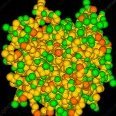Report Heavy Metal Contamination Alarms Northern Thailand: Rivers at Risk
-
Recently Browsing 0 members
- No registered users viewing this page.
-
Topics
-
-
Popular Contributors
-
-
Latest posts...
-
89
Dr. Phil vs Two Lefty's, Maher & Steven A.- ICE Raids...
133 from a 4 test average. Long way ahead of yours at 85 -
34
Chikungunya - They are at it again!
Nature has to be respected. If we continue to use earth's resources to kill our fellow humans, destroy the habitat of animals and foul the earth, and the next generation does the same, then there is little hope that we can fulfil our destiny for maybe 100 years. We have the power. We must get off our apathetic knees and unite. It is through our strengths that we can rebuild our education and medical systems. Respect nature. Respect fellow humans. Respect animals. -
55
UK 474 Arrested at London Protest Against Palestine Action Ban
To be honest Will most of those I saw getting arrested won't be around in 14 years -
39
-
44
Report Lao Women Caught in Fake Photo Sex Sting in Bangkok
Since when have Thais been exempt from the illegality of prostitution? Where was it reported that these three girls were charged with prostitution? -
55
-
-
Popular in The Pub









Recommended Posts
Create an account or sign in to comment
You need to be a member in order to leave a comment
Create an account
Sign up for a new account in our community. It's easy!
Register a new accountSign in
Already have an account? Sign in here.
Sign In Now